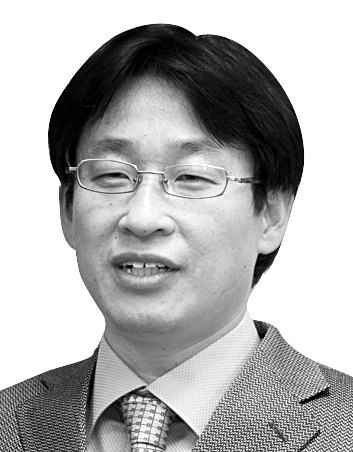Ramifications of a high exchange rate

The author is the economic news editor of the JoongAng Ilbo.
In his eight-minute keynote speech at the U.S. central bank’s annual Jackson Hole Economic Symposium on Friday morning, Federal Reserve Chairman Jerome Powell kept up his unequivocally hawkish tone.
Powell reminded attendees that he had said, “Another unusually large increase could be appropriate at our next meeting [in September],” after delivering back-to-back hikes by unprecedented 75 basis points in July.
Emphasizing that price stability is the “bedrock of our economy,” he vowed to continue with the restrictive policy until inflation is brought back to the “2 percent goal” as “the historical record cautions strongly against prematurely loosening policy.” His straight-forward policy direction has changed the market sentiment. All major currencies crashed against the U.S. dollar, while stock markets crumbled. Since Powell’s address, the global market cap has been trimmed by as much as $5 trillion.
Central banks around the world are struggling to tame runaway inflation. Korea’s consumer price index gain accelerated to 6.3 percent in July from 3.6 percent in January. The rate slightly slowed to 5.7 percent in August on softening fuel prices, but still remains volatile. The annual gain in inflation rate averaged at 5.0 percent as of August. In its revised economic outlook, the Bank of Korea (BOK) projected an annual inflation rate of 5.2 percent for this year, which would be the steepest since the 9 percent in 1998.
The CPI in the U.S. bounced to 9.1 percent in June against a year ago, the highest since November 1981. In July, it eased to 8.5 percent. The conditions in Europe are more perilous as the continent falls under the whims of Russia fidgeting with pipelines in response to sanctions. Consumer prices in Germany shot up 7.9 percent in August against a year ago, the steepest rise in 49 years.
Governments and central banks had unleashed unprecedented liquidity to cushion their economies from the fallouts of the pandemic. Prices rose. The war between Russia and Ukraine — both global breadbaskets — sent fuel and grain prices skyrocketing. The strong U.S. dollar fueled prices further. As the Fed raised its benchmark rates to help curb inflation buildup, the greenback gained more strength than ever.
In Bloomberg’s comparative scale of the performance of 31 currencies against the U.S. dollar, the Korean won suffered the eighth-steepest fall. The Korean won lost most after the Japanese yen, Swiss franc and British pound. The Korean won which stood at 1,191.8 won at the beginning of the year fell 15 percent to 1,371.4 on Monday. Forex volatility plays big for countries like Korea whose economy runs on exports from imported raw materials.
A strong dollar can be harsh on the economically weak. It makes imports expensive and leads to overall price gains. The central bank must raise its benchmark rate, as its primary role is to stabilize prices. In that case, leveraged merchants and individuals have to struggle to meet the higher cost of debt financing. As many as 4.46 million Koreans have loans with more than three financial institutions as of March.
The consumer burden goes up as Korea imports most staples and raw materials from petroleum to wheat flour. As much as 36.7 percent of the growth in import prices in the first half owed to the higher dollar exchange rate.
The idea that a weak currency helps exporters no longer stands. A cheaper won does not help Korea’s price competitiveness much, as rivaling currencies of Japan and China have also fallen sharply. Korea has incurred a trade deficit for the fifth straight month in August. The inventory of the 500 largest Korean companies increased by 50 percent in the first half against a year ago.
According to the International Monetary Fund, foreign exchange reserves of emerging economies shrank by $379 billion as of June, the largest on-year fall since the global financial crisis of 2008.
Job insecurity and the debt burden from volatile exchange rates makes lives harder. To help them continue their normal economic activities, authorities must come up with comprehensive measures beyond the level of debt restructuring.










with the Korea JoongAng Daily
To write comments, please log in to one of the accounts.
Standards Board Policy (0/250자)